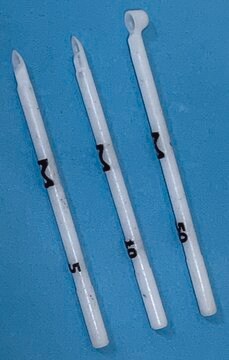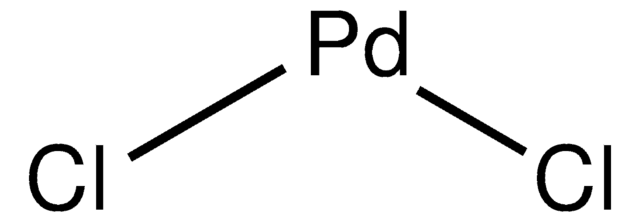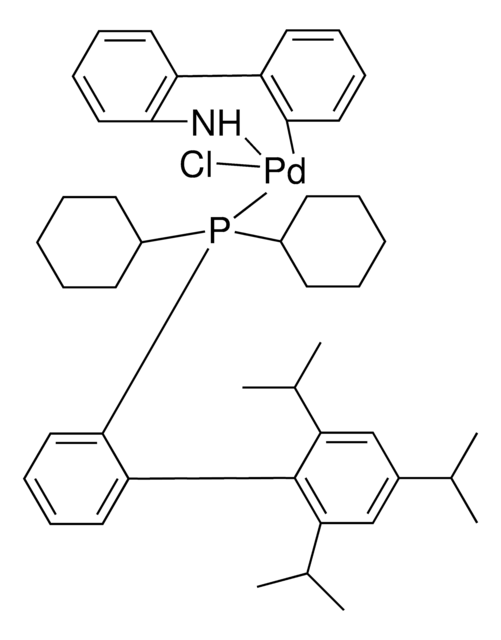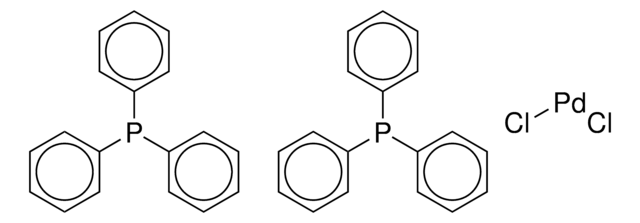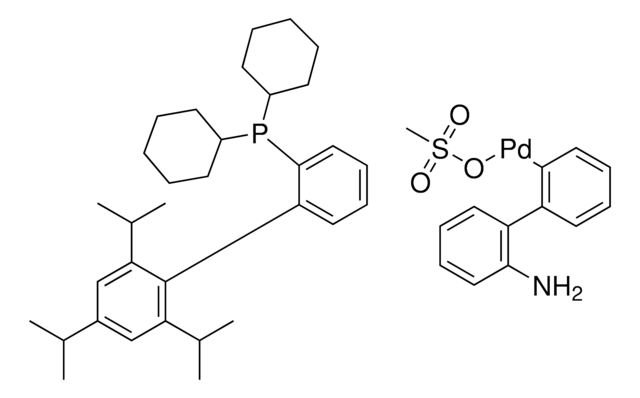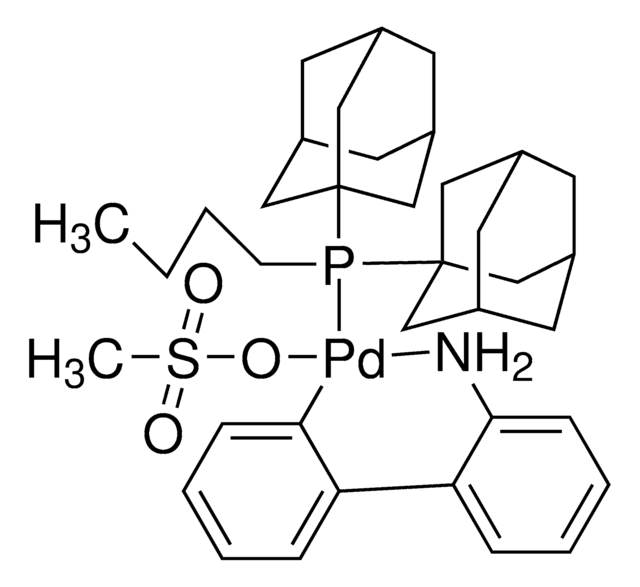927783
XPhos Pd G3 ChemBeads
Synonym(s):
(2-Dicyclohexylphosphino-2′,4′,6′-triisopropyl-1,1′-biphenyl)[2-(2′-amino-1,1′-biphenyl)]palladium(II) methanesulfonate, XPhos-G3-Palladacycle, XPhos-Pd-G3
Sign Into View Organizational & Contract Pricing
All Photos(1)
About This Item
Empirical Formula (Hill Notation):
C46H62NO3PPdS
CAS Number:
Molecular Weight:
846.45
MDL number:
UNSPSC Code:
12352101
NACRES:
NA.82
Recommended Products
form
solid
Quality Level
composition
~ 4 wt.% loading of catalyst
reaction suitability
reagent type: catalyst
reaction type: Cross Couplings
General description
XPhos Pd G3 is a third generation (G3) Buchwald precatalyst. It is air, moisture and thermally-stable and is highly soluble in a wide range of common organic solvents. It has long life in solutions. XPhos Pd G3 is an excellent reagent for Suzuki cross-coupling reactions. Some of its unique features include lower catalyst loadings, shorter reaction time, efficient formation of the active catalytic species and accurate control of ligand: palladium ratio.
For larger scale uses, product also available in powdered form (763381)
For larger scale uses, product also available in powdered form (763381)
Application
XPhos Pd G3 may be used in the following reactions:
Learn more about ChemBeads products
- Cyanation reaction of heterocyclic halides.
- Coupling of heteroaryl chlorides with polyfluoroaryl zinc reagents.
- Coupling of 2,6-difluorophenylboronic acid with (hetero)aryl chlorides.
Learn more about ChemBeads products
Other Notes
High-Throughput Reaction Screening with Nanomoles of Solid Reagents Coated on Glass Beads
Versatile Methods to Dispense Sub-Milligram Quantities of Solids using Chemical Coated Beads for High-Throughput Experimentation
ChemBead Enabled High-Throughput Cross-Electrophile Coupling Reveals a New Complementary Ligand
Versatile Methods to Dispense Sub-Milligram Quantities of Solids using Chemical Coated Beads for High-Throughput Experimentation
ChemBead Enabled High-Throughput Cross-Electrophile Coupling Reveals a New Complementary Ligand
Storage Class Code
11 - Combustible Solids
WGK
WGK 3
Certificates of Analysis (COA)
Search for Certificates of Analysis (COA) by entering the products Lot/Batch Number. Lot and Batch Numbers can be found on a product’s label following the words ‘Lot’ or ‘Batch’.
Already Own This Product?
Find documentation for the products that you have recently purchased in the Document Library.
Our team of scientists has experience in all areas of research including Life Science, Material Science, Chemical Synthesis, Chromatography, Analytical and many others.
Contact Technical Service